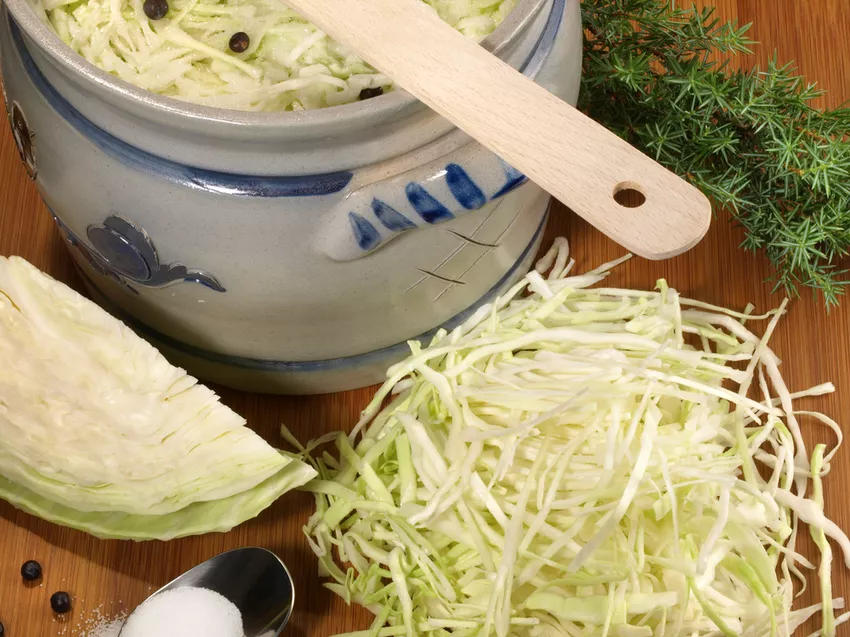- Why does cabbage become sauerkraut
- Ingredients for making sauerkraut
- Preparation in the fermentation pot
- Preparation in glasses
Sauerkraut is one of the oldest vegetables in the world: as early as ancient Greece, white cabbage was sliced and then lactic acid fermented. In addition, the preserved white cabbage is extremely low in calories and can confidently be called a superfood because of its high vitamin content. You can easily make these winter vegetables yourself with our traditional recipe.
 To make sauerkraut you need cabbage, salt and patience
To make sauerkraut you need cabbage, salt and patience
Why does cabbage become sauerkraut
White cabbage becomes sauerkraut through a fermentation process. In this process, the sugar in the cabbage is converted by lactic acid bacteria. This gives the vegetables their typical mild, sour taste. At the same time, the white cabbage is preserved.
While sauerkraut used to be produced in almost every household, today we mainly consume cabbage from a tin or a tetra pack. While this is convenient, it has a downside: pasteurization destroys a lot of the nutrients.
Widow Bolte has just gone down into the cellar with a plate, so that she can get a portion of the sour charcoal, which she raves about especially when it's warmed up again. (Wilhelm Busch)
Ingredients for making sauerkraut
The list of ingredients is not long: in addition to a cabbage pot or jars with clip or screw caps, all you need to pickle white cabbage is:
- 1 kg white cabbage
- 5 - 10 g table salt
- some peppercorns, juniper berries, cumin and bay leaves
Preparation in the fermentation pot
- First clean the fermentation pot thoroughly with very hot water.
- Remove the outer leaves of the cabbage and cut out the core.
- Using a cabbage knife, slice the vegetables into fine strips.
- Place a four inch layer of shredded cabbage in the fermentation pot. This corresponds to about one kilo.
- Sprinkle the salt and spices on top.
- Now pound the cabbage layer with the cabbage masher until it is well compacted and the vegetable juice comes out.
- Now fill in the next layer of cabbage, salt and spices and tamp again.
- Work your way up layer by layer until the pot is a little over ¾ full.
- Let everything rest for half an hour. So much liquid should now have formed that the cabbage is completely immersed in its own juice.
- If not, add more brine.
- As a final layer, place some cabbage leaves and press until the leaves are in the brine.
- Now place the two-part weighting stone on the sauerkraut.
- Pour some water into the groove on the edge of the pot and close with the rinsed lid.
- Leave at room temperature for three days until fermentation begins.
- Then leave to ferment in a cool, frost-free place for four to six weeks.
Preparation in glasses
- Since the amount of cabbage is usually smaller, you can cut the white cabbage into fine strips with a sharp kitchen knife.
- Place in a bowl and knead vigorously with the salt.
- Press the herb firmly into the glasses and fill up with the resulting liquid. There should be a 2cm border at the top.
- Seal jars, place on a tray and leave at room temperature for three days.
- When the first bubbles appear, fermentation has started.
- Now put the jars in a dark, cool place.
tips
You get sauerkraut juice by squeezing your homemade sauerkraut in a juicer. If you suffer from gastrointestinal complaints, for example after taking antibiotics, this natural remedy has a soothing effect.